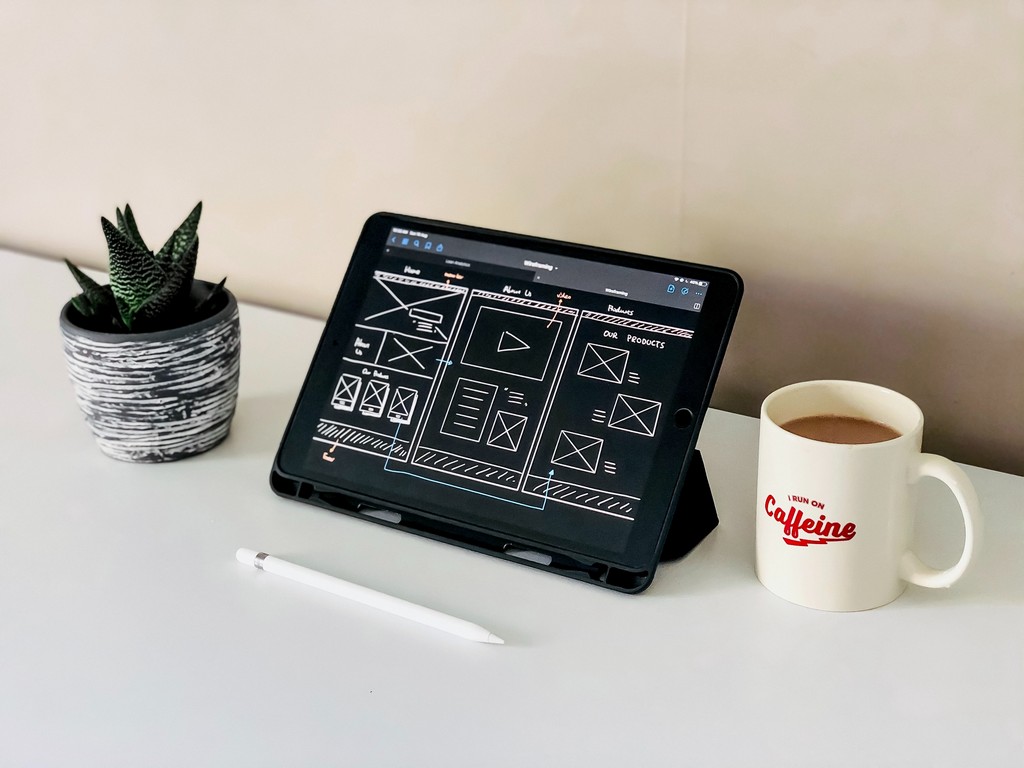How to Create a Wireframe: Your Ultimate Guide
27/12/2023 2023-12-27 17:47How to Create a Wireframe: Your Ultimate Guide
One of the most critical components of UX design is generating key outlines of your design and communicating your ideas to your peers. This is where wireframes come in! These key tools allow you to create a basic layout and visually represent your ideas. You can then showcase designs to others and tweak design elements to better fit your webpage or app. Wireframes help you make your designs more efficient, navigable and creative. But how to create a wireframe?
Creating a wireframe involves using appropriate tools to develop a skeletal outline of what you want your website or app to look like. These layouts are created to be focused on elements, placement and navigability rather than content details or aesthetics. The right wireframe can tangibly represent your vision for your employers and stakeholders and allow for optimisation. This blog will guide you through the basics of wireframing, from the difference between wireframes, mockups and prototypes, to wireframing layouts and tools. So how do you create a wireframe? Read to find out!
Understanding the Basics: What Are Wireframes in UX?

Essentially, a wireframe is a low-fidelity layout of a digital interface. Wireframes allow you to construct and plan a barebones outline of what a page on your website, software or app will look like. They allow you to workshop, polish your ideas and tweak the elements that don’t work before creating a working prototype. Wireframes can be hand drawn or digitised, containing black, white and grey elements comprising basic shapes and text. The focus on wireframes tends to be placement, navigability and efficiency of use, without much of a focus on aesthetics, content structure or more complex design elements added later.
Visual Guide to Final Visual Design: Wireframe vs Mockup
Wireframes are different from mockups in a few key ways. For one, a wireframe is a low-fidelity outline of an interface, meaning that it contains no images, colours or typographical design. Conversely, a mockup is a high-fidelity layout of a digital user interface containing images, colours and typography.
Mockups can be thought of as the next stage to wireframing, where once a wireframe is approved, it can be polished to create a mockup. This is meant to represent the final visual design, encompassing brand image, colours, and contains logos and designed text.
Visual Guide to Functional Model: Wireframe vs Prototype
Prototypes, while used interchangeably with wireframes, are a very different concept. They are functional digital design models that have been programmed to be interactive. Essentially, they are a working model of the actual app interface that can be interacted with.
Prototypes are coded to represent working elements of a design and are a later stage of the UX design process. In contrast, wireframes are visual guides created at a much earlier stage of the design process, comprised of hand-drawn or digitally drawn-sketches of the layout.
From Balsamiq to Figma: What are Wireframe Tools?

As the name suggests, wireframe tools are applications that UX designers use to create wireframes for websites, software and mobile applications. A UX designer would typically make a hand-drawn wireframe to place all items required on an interface and tweak design choices until they have a version that works, designed using these digital tools. The most popular wireframing tools include wireframe.cc, AdobeXD, Balsamiq, Axure RP, Figma and Sketch.
Each application consists of helpful features such as templates, drag and drop, representation formats, alignments, and collaboration options for team members to work together. These tools vary based on cost, available features, and ease of use. Choosing the right tool for your project depends on your requirements and your team’s expertise and experience.
Creativity Meets Skill: How to Create Better Wireframes
Wireframes are foundational to any UX design. An effective and intuitive wireframe can streamline the entire design process by serving as a visual guide to the interface’s functionality, structure and layout. You may ask, how to create wireframes for mobile apps and websites? In this section, we will provide some essential tips and tricks for creating effective wireframes.
Choose the Right Wireframe Layout
Wireframe layouts depend on the specific project requirements and the designer’s preferences. However, some common layouts used for wireframing can be incredibly useful. Some wireframe layout examples include
- Flowchart – Help in visualising flow when designing page transitions. Useful for interfaces involving multiple stages.
- Grid – Help in perfecting element placements, especially if a design contains many components.
- Storyboard – Help in visualising the user’s journey through a website or app, especially useful for narrative interfaces.
Be Mindful of The Purpose and Final Product
It is crucial to be aware of the benefits and limitations of the platform you are designing for and the ultimate goal of the product. For example, when designing a mobile app, the size of a phone screen needs to be kept in mind to avoid element overcrowding. Your product should be easy to navigate and engaging.
How to Create a Wireframe in Balsamiq
Balsamiq is a popular wireframing tool with an easy-to-use interface:
- Select the platform you’re designing for (mobile, desktop, etc.)
- Drag and drop required elements and change the properties as needed
- Add colour and short text
- Collaborate with team members and make polish collectively
How to Create a Wireframe in Adobe XD
Adobe XD is a powerful tool that can create wireframes, mockups and prototypes:
- Create a new artboard and select the device you’re designing for.
- Use the toolbar to add fundamentals such as boxes, shapes and placeholder text
- Make use of wireframing plugins to get template kits and add more elements
How to Create a Wireframe in Figma
Figma can create wireframes, mockups and prototypes with ease:
- Create a new file and choose your desired platform configuration
- Add UI/UX components such as shapes, symbols and text, and adjust as needed
- Collaborate with teammates and stakeholders
Conclusion
Well, we hope you’ve gotten your answer to ‘how to create a wireframe?’ Wireframes are the backbone of any successful UX design process. They help designers visualise a digital interface’s layout, structure and navigability before it’s programmed into complex versions. Effective wireframes are planned and designed thoroughly using the right tools and layouts. With the right approach, you can create wireframes that dazzle and impress!
If you need guidance on wireframing and UX design fundamentals, why not check out JD School of Design’s reputed Master’s degree in User Experience and Interface Design? This course is centred around innovation, sustainability and ethicality and could be the ultimate feather in your UX Design cap!














